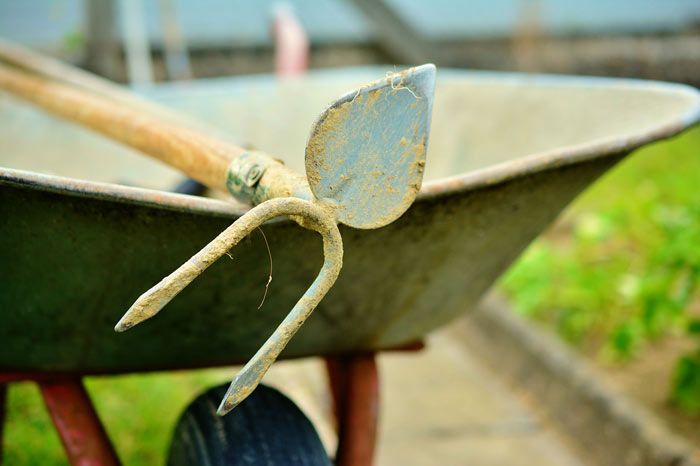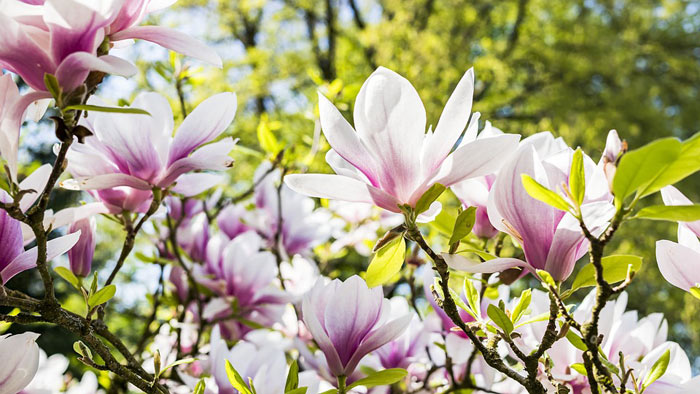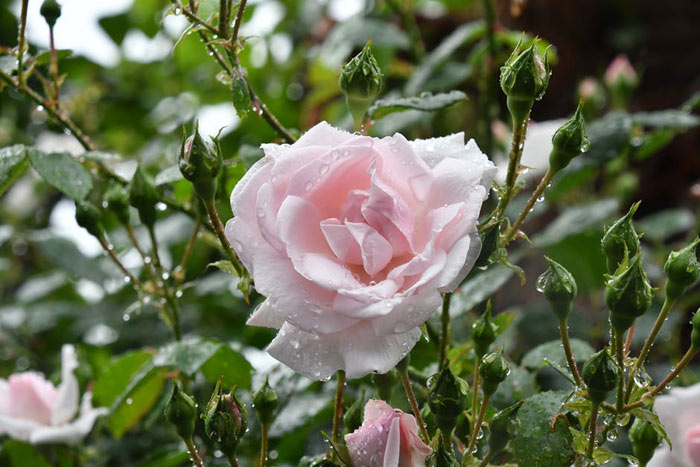Now that the winter has lifted its cold pall, and nature is shaking itself to life, we like to see everything around us refreshed. Assumably your house has already received its spring scrubbing; have you found time for your backyard and your garden? It’s time you have if the snow is gone. The work is likely to be taxing, but you want a beautiful landscape for the warm months to come. So, below are some great spring garden tips on where to start and what to pay attention to.
Remove weeds
Weeds could easily have taken all this time to vegetate all over the place, and while the ground is wet and soft you can dispense with them with more ease. You can have far more trouble with them once the ground has dried and become harder. Also, they will have more time to grow deeper roots and go to seed. The extirpation will bring on a nicer look to your yard as soon as you’re through with it.
Clean up flower beds and borders
Along with weeds, there are leftover half-rotten leaves and other bits and pieces to clear away. When the debris is gone, you will uncover some wilted growth of your grasses and plants which had better be cut off (but this can be done at a later date which is better for the plants).
Your clearing campaign should leave your beds with uncovered soil. The dead stuff should go to a compost heap or to a special bin where it will continue decomposing. The weeds mustn’t go with it to avoid seeding; stow them to a special bin or just burn them. You don’t want them to shed seeds and reinstall themselves among good plants.
Top up soil

Work your soil laying into empty borders about 5cm of organic matter (rotten compost or manure, recycled green waste).
Beware of late frost
Mid-April frosts are not unheard-of, so remain mindful of the weather in case your flora needs protection. Flowers and buds will suffer most, so in case of a perilous forecast arrange cloches or horticultural fleece to avoid them freezing.
Time to sow vegetables
A vegetable-sowing time is on the threshold already. To begin with, get rid of all the weeds in the area, then fertilize it well. Wait until your soil warms up to 6ºC and don’t lose time over sowing outside. It is a propitious time to sow carrots, lettuces, onions, spinach, and beetroots.
Divide perennials
Perennials are to go spring growing soon; the time is right to divide them before they are well on their way. Dividing perennials will be easy on your budget, you can get enough of them for your garden and give some out to your friends.
Besides, it will help keep your already growing perennials in good condition; you will find that in a few years your plants growing thickly in a clump begin to thin out, and a bare spot appears in the middle. In order to remedy this, divide the clump.

Refresh mulch
Once your garden beds are free from debris, you can make them look better and become more fertile by laying a blanket of fresh mulch. The mulch blanket will prevent weeds from growing and moisture in the soil from evaporating. Mind you get a sufficient supply of mulch because the covering process is apt to take more than you figured out, so you might need to go back for more for good layers.
Set about laying mulch with a rake or with your hands (in gloves) trying to put it evenly. Make sure you do not put a very thick layer because heavily coated plants could develop diseases. Also, an uneven or thick layer could be dislodged easily in case of strong winds and heavy rains.
Don’t forget matted leaves
Matted leaves need to be cleared away. However, a small number of leaves surrounding trees, perennials and shrubs can remain where they are and mulch laid over them. You may not trouble yourself about those.
But if you have a lot of green plants on the lawn or on the evergreen groundcover beds, you’d better rake matted leaves off because they can shield the sunlight.
Prune roses, shrubs, and vines
Your perennial vines certain shrubs and prune roses, if you have them, may need to be pruned. Do away with withered branches and give plants neat shapes when new growth begins. Each plant requires a separate approach, so do your homework on pruning techniques and learn about good timing. Spring bloomers had better be pruned only upon flowering.

Install rainwater collectors
When it comes to water collectors, winter is the proper time to install butts in the garden and collect as much of seasonal rainfall as it is possible. If you have missed the past winter’s rainfall, you will still have time to make up for it this spring. Employing rainwater makes your gardening environmentally friendly. When water demand starts to mount during the summer water supply companies are often driven to use water from underground reserves and springs, thus depleting environmental water sources and making supplies more costly. Also, tap water being somewhat alkaline, rainfall is much better for all your plants.
Repair the lawn
Inspect the lawn for bare patches, and if you find any, seed or turf them to improve the general look of your garden – unless you have artificial grass that guarantees the ideal appearance of your lawn. In this case, brush it up and leave it be.
Maintain the fence
Before the season is in full swing there is just time to get busy with all the trifling maintenance jobs that have run up since last fall. Gates, trellis, fence panels are bound to have sustained some damage from bad weather, or rot has set in. Renew them, mend structures, replace broken segments. Having done your fixing you will be free for gardening and give the area a fresh look.
Invest in a strong washer to clean gates and fence panels of dirt, occasional moss, mildew, and other unseemly mess. Where it might prove stubborn, use a stiff brush on it. Once the woodwork has dried, choose a dry day and apply a coat of paint, wood preservative, or stain, then follow it up with a second one.

Make your garden wildlife-friendly
It’s simply marvelous if your garden is alive with wildlife. Birds and small field animals chase away pests, make the ecosystem well-balanced and bring in their special charm to the place. Make sure there is ample clean water; rig up nesting boxes designed and placed to fit particular kinds of birds; arrange for habitat by planting trees and hedging providing shelter and nesting places. See you have enough natives that serve as food sources of seeds, nectar, berries.
Enjoy sunny days
Benefit your health and mood by taking breaks during your work, enjoy the sunshine on your skin, look around for new signs of nature awakening, listen to chirrup, rustle, relaxing natural sounds and murmurs.











